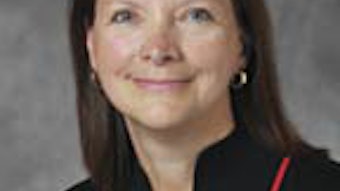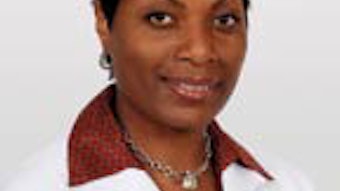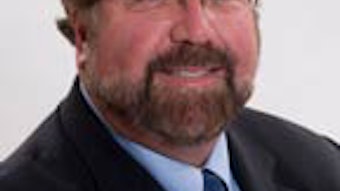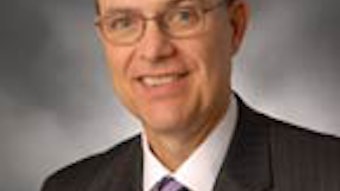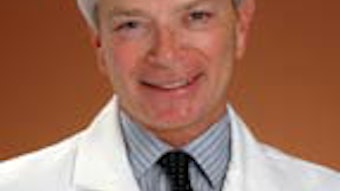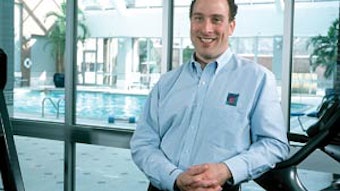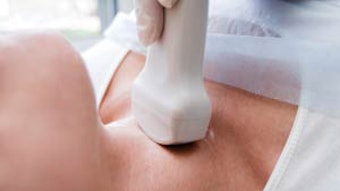American Society of Geriatric Otolaryngology (ASGO)
Karen M. Kost, MD Assoc. Prof. Otolaryngology Westmount, Quebec, Canada There will be more of us later…and it’s time for surgical disciplines to dedicate themselves to the care of the elderly. Geriatric surgery has arrived, and societies such as ASGO are at the forefront of the movement. We have a responsibility to share our knowledge and insights, and to collaborate with each other as well as with our medical and surgical colleagues,” said Joseph LoCicero, MD, the keynote speaker at the American Society of Geriatric Otolaryngology (ASGO) in 2008. A glimpse at major shifts in population demographics adds perspective to the timeliness of these words. Since the beginning of recorded human history, young children have outnumbered older people. In what is a global trend, people age 65 and over will soon outnumber children under the age of five. In 2006, almost 500 million people worldwide were 65 and older, accounting for 8 percent of the world’s population. By 2030, that total is projected to increase to one billion—one out of every eight of the Earth’s inhabitants. Significantly, the most rapid increases in the 65 and older population are occurring in developing countries, which will see a jump of 140 percent by 2030. An important feature of population aging is the progressive aging of the older population itself. Over time, more older people survive to even more advanced ages. The “oldest old” are often defined as people age 85 and over. Because of chronic disease, the oldest old have the highest population levels of disability that require long-term care. They consume public resources disproportionately as well. The oldest old constitute 7 percent of the world’s 65 and over population: 10 percent in more developed countries and 5 percent in less developed countries. Although people of extreme old age—centenarians—constitute a small portion of the total population in most countries, their numbers are growing, having doubled each decade since 1950 in more developed countries. Global aging is a success story with people living longer and generally healthier lives. Increased life expectancy reflects a number of health transitions occurring around the globe at different rates. Changes affecting life expectancy include: a shift from high to low fertility, a steady increase in life expectancy at birth and at older ages, a shift from the predominance of infectious and parasitic diseases to the growing impact of noncommunicable diseases and chronic conditions, economic development, and ongoing medical advances and new drugs. But sustained growth of the world’s older population also presents challenges. Population aging affects economic growth, formal and informal social support systems, and the ability of states and communities to provide resources for older citizens. Attempting policy adjustments such as changes in retirement ages and medical benefits may be painful and unpopular. Nations must quickly recognize the scope of the new demographic reality and adjust current policies accordingly. Dr. LoCicero, formerly the chairman of the Interspecialty group formed by the American Geriatric Society (AGS), recognized the brewing crisis in elderly care. The AGS realized that it could not handle the volume of patients by themselves. It therefore reached out to several specialties, including ours, over 15 years ago, to embrace this focused area and foster research and education in this critical matter. Recognition of the scope of the new demographic reality led to birth of ASGO in 2007, a result of the foresight and leadership of its first president, Jerome C. Goldstein, MD. In the course of the five annual ASGO meetings that have been held to date, the society has been privileged to have several well-respected leaders share their vision of the challenges and future directions in the care of the elderly. Keynote speakers and guests of honor have included Andrew Monjan, PhD; Richard R. Goode, MD; Joseph LoCicero, MD; Frank E. Lucente, MD; David Nielson, MD; Ron J. Bailey, MD; Eugene Myers, MD; Lisa Lehman, MD, RCS; J. Regan Thomas, MD; and William Dale, MD. The mission of ASGO is simple: to encourage and support research and promote education in geriatric otolaryngology. With the cooperation of the AAO Geriatric Committee, several well-attended geriatric miniseminars at AAO-HNS meetings in 2009 and 2010 have highlighted the importance of particular themes in geriatric otolaryngology, including dysphagia, dysphonia, dizziness, hyposmia, and hearing loss within the context of the frequently superimposed ethical issues. This year’s annual meeting is featuring another miniseminar on “Misdiagnoses in aging.” It is well-recognized that older patients present special challenges in terms of medical care: Clinical presentation of various disorders is often atypical, and management is multifaceted, requiring a multidisciplinary approach to address complex needs. The time is now to prepare yourself and your practice for the increasing numbers of geriatric patients requiring your assistance. Joining ASGO can help prepare you to meet the needs of your geriatric patients. Membership for residents is free, as is the annual meeting. Residents presenting posters are automatically eligible for the “Best Poster” award, which consists of a cash prize. There is a nominal $100 membership fee for practicing otolaryngologists. To join or find out more about ASGO, come visit us at our booth at the San Francisco 2011 AAO-HNSF Annual Meeting & OTO EXPO, or go to www.geriatricotolaryngology.org. Sources of information: National Institute on Aging, National Institutes of Health, U.S. Department of Health and Human Services and the U.S. Department of State.
Karen M. Kost, MD Assoc. Prof. Otolaryngology Westmount, Quebec, Canada
There will be more of us later…and it’s time for surgical disciplines to dedicate themselves to the care of the elderly. Geriatric surgery has arrived, and societies such as ASGO are at the forefront of the movement. We have a responsibility to share our knowledge and insights, and to collaborate with each other as well as with our medical and surgical colleagues,” said Joseph LoCicero, MD, the keynote speaker at the American Society of Geriatric Otolaryngology (ASGO) in 2008. A glimpse at major shifts in population demographics adds perspective to the timeliness of these words.
Since the beginning of recorded human history, young children have outnumbered older people. In what is a global trend, people age 65 and over will soon outnumber children under the age of five. In 2006, almost 500 million people worldwide were 65 and older, accounting for 8 percent of the world’s population. By 2030, that total is projected to increase to one billion—one out of every eight of the Earth’s inhabitants. Significantly, the most rapid increases in the 65 and older population are occurring in developing countries, which will see a jump of 140 percent by 2030. An important feature of population aging is the progressive aging of the older population itself.
Over time, more older people survive to even more advanced ages. The “oldest old” are often defined as people age 85 and over. Because of chronic disease, the oldest old have the highest population levels of disability that require long-term care. They consume public resources disproportionately as well. The oldest old constitute 7 percent of the world’s 65 and over population: 10 percent in more developed countries and 5 percent in less developed countries. Although people of extreme old age—centenarians—constitute a small portion of the total population in most countries, their numbers are growing, having doubled each decade since 1950 in more developed countries.
Global aging is a success story with people living longer and generally healthier lives. Increased life expectancy reflects a number of health transitions occurring around the globe at different rates. Changes affecting life expectancy include: a shift from high to low fertility, a steady increase in life expectancy at birth and at older ages, a shift from the predominance of infectious and parasitic diseases to the growing impact of noncommunicable diseases and chronic conditions, economic development, and ongoing medical advances and new drugs.
But sustained growth of the world’s older population also presents challenges. Population aging affects economic growth, formal and informal social support systems, and the ability of states and communities to provide resources for older citizens. Attempting policy adjustments such as changes in retirement ages and medical benefits may be painful and unpopular. Nations must quickly recognize the scope of the new demographic reality and adjust current policies accordingly.
Dr. LoCicero, formerly the chairman of the Interspecialty group formed by the American Geriatric Society (AGS), recognized the brewing crisis in elderly care. The AGS realized that it could not handle the volume of patients by themselves. It therefore reached out to several specialties, including ours, over 15 years ago, to embrace this focused area and foster research and education in this critical matter. Recognition of the scope of the new demographic reality led to birth of ASGO in 2007, a result of the foresight and leadership of its first president, Jerome C. Goldstein, MD.
In the course of the five annual ASGO meetings that have been held to date, the society has been privileged to have several well-respected leaders share their vision of the challenges and future directions in the care of the elderly. Keynote speakers and guests of honor have included Andrew Monjan, PhD; Richard R. Goode, MD; Joseph LoCicero, MD; Frank E. Lucente, MD; David Nielson, MD; Ron J. Bailey, MD; Eugene Myers, MD; Lisa Lehman, MD, RCS; J. Regan Thomas, MD; and William Dale, MD.
The mission of ASGO is simple: to encourage and support research and promote education in geriatric otolaryngology. With the cooperation of the AAO Geriatric Committee, several well-attended geriatric miniseminars at AAO-HNS meetings in 2009 and 2010 have highlighted the importance of particular themes in geriatric otolaryngology, including dysphagia, dysphonia, dizziness, hyposmia, and hearing loss within the context of the frequently superimposed ethical issues.
This year’s annual meeting is featuring another miniseminar on “Misdiagnoses in aging.” It is well-recognized that older patients present special challenges in terms of medical care: Clinical presentation of various disorders is often atypical, and management is multifaceted, requiring a multidisciplinary approach to address complex needs. The time is now to prepare yourself and your practice for the increasing numbers of geriatric patients requiring your assistance.
Joining ASGO can help prepare you to meet the needs of your geriatric patients. Membership for residents is free, as is the annual meeting. Residents presenting posters are automatically eligible for the “Best Poster” award, which consists of a cash prize. There is a nominal $100 membership fee for practicing otolaryngologists. To join or find out more about ASGO, come visit us at our booth at the San Francisco 2011 AAO-HNSF Annual Meeting & OTO EXPO, or go to www.geriatricotolaryngology.org.
Sources of information: National Institute on Aging, National Institutes of Health, U.S. Department of Health and Human Services and the U.S. Department of State.


